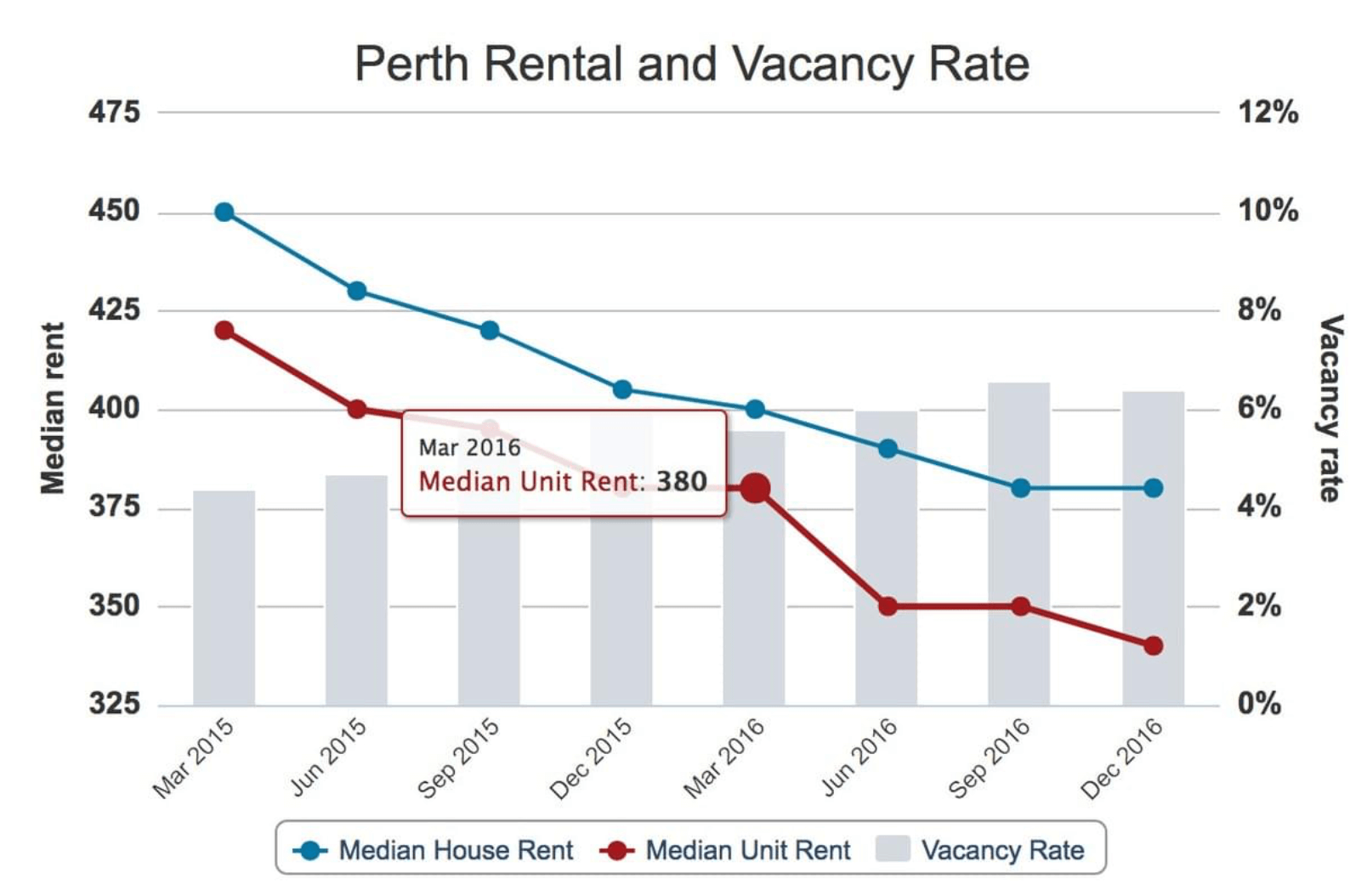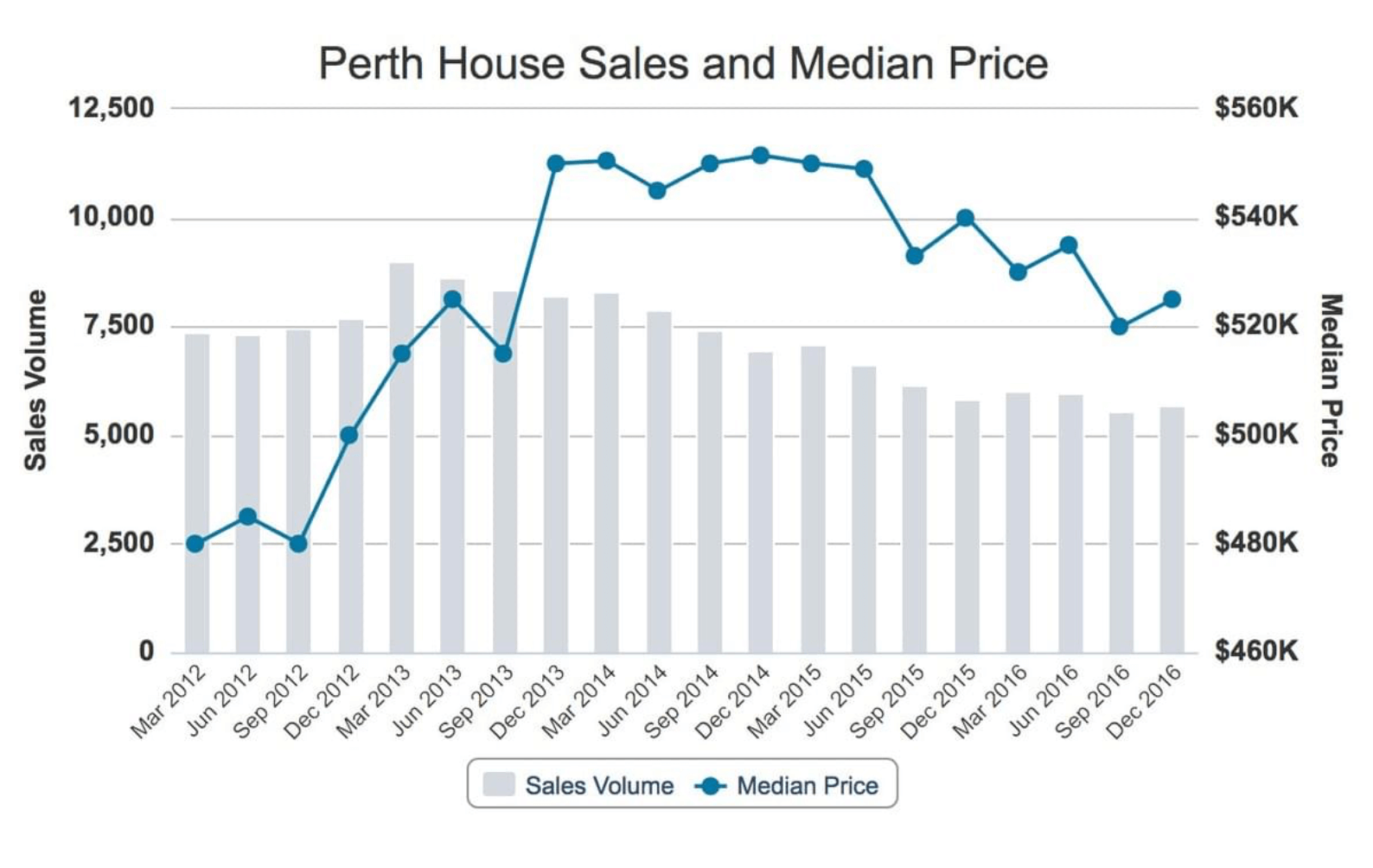5 Tips on Managing Your Portfolio in a Challenging Market

Do you own multiple properties? Are you worried about managing your portfolio in a challenging Perth housing market? I hear you friends. Times are tough with Perth property and rental prices about as lively as a Subiaco restaurant on a Monday night. Fear not, I have put together a few tips to help keep those vacancy rates down and your rent dollars rolling in. Read on and share with your property investor friends who may need a pick me up!

Let's Get Real
Let’s look at a real world example situation I myself was in last month.
I had two properties vacant last month. One on the market, we’ll call that Property A, and another coming up for lease renewal, Property B. Property A was not selling so we decided to rent it out. I priced Property A just under market value to ensure I would get enquiries and interest. We were getting over $500 last year, so I priced it at $475. And wouldn’t you know it, put Property A online Thursday, got a phone call Friday, scheduled a viewing for Saturday, and application accepted Monday. Now you would think that I would be over the moon, but my traitorous brain whispered “Oooh, probably could have priced it a bit higher, you’ve missed out there Caroline!”.
Later that month, my tenants on a periodic lease in another property, Property C, called and said, “we’re moving out on Saturday”. What!? As we all know, tenants on periodic leases only need to give twenty-one days notice, and this will of course happen when you can least afford it. So, if I had held out for a higher rental price on Property A, I could have been left three properties vacant at once, which would have resulted in some serious cash flow challenges to say the least! So, the moral of my story? Protect that cashflow!
Later that month, my tenants on a periodic lease in another property, Property C, called and said, “we’re moving out on Saturday”. What!? As we all know, tenants on periodic leases only need to give twenty-one days notice, and this will of course happen when you can least afford it. So, if I had held out for a higher rental price on Property A, I could have been left three properties vacant at once, which would have resulted in some serious cash flow challenges to say the least! So, the moral of my story? Protect that cashflow!
State of The Market Right Now
We are definitely in what I would call a “challenging” market with rents on the way down, and vacancy rates are working their way up as seen in the graphs below from REIWA.


As you can see, the median Perth house price has come down since 2013 while sales volumes have also decreased, while vacancy rates have crept up and median rents have slowed. In very general terms, this slowing of house prices has pushed more owners to hold on to properties and rent them out, increasing supply. While on the demand side, the population exodus from the state thanks to the slowdown in mining has hurt demand. Add to this a whole host of other negative factors (that’s a whole other blog post) and you get more supply plus lower demand which equals the perfect property investor one-two gut punch, resulting in lower rents and sale prices.
So what can you do about it? Protect your cash flow with these tips.

1. Timing is Everything – Lease Timing
Understand when your leases are coming up for renewal on all your properties. This may sound obvious, but in the hustle and bustle of property investor life, this can get overlooked very easily, especially with portfolios that include old and new houses with different lease times.
Are multiple properties coming up for renewal within a short amount of time? Consider the implications of multiple properties suddenly vacant at the same time. In a challenging market, you cannot always guarantee that all tenants will renew and you’ll go on your merry way. If two of your three properties are suddenly vacant, how long will you be able to handle multiple vacancies?
Also, check if any tenants are on a periodic lease. Tenants on periodic leases only need to give twenty-one days notice, and in a challenging market, three weeks may not be adequate time to find a new tenant and avoid vacancy time.
2. Cover Up – Property & Landlord Insurance
Simple yet crucial, if you aren’t covered, the potential costs of a tenant damaging your property or absconding from a lease can be financially devastating. One bad tenant could bring your whole portfolio to it’s knees, so cover up and sleep soundly knowing your assets are safely insured.
3. Get Streetwise – Know Your Competition
A challenging market is not the time to set and forget your portfolio, it’s time to get your hands dirty and know what’s happening with your properties and the competition. Start with your direct competition, the other houses in your suburb. Consider what type of kitchen and cook top you have (tenants love gas!), who’s got a pool, what the outdoor space is like and how much rent is being charged for it all. Check out the surrounding suburbs too. Then go a bit deeper and check for things coming up in the area that could affect housing supply or demand, like a new housing development or a new train line or even a bus route.
4. The Art Of The Deal – Be Open To Negotiating With Your Tenants
In a challenging property market, the enemy of all property investors is a vacant property, and avoiding vacancy time can sometimes be more important than getting the highest price possible. So be open to negotiation!
While a price drop of ten or twenty dollars per week can seem like a big loss, the unavoidable vacancy time that occurs when bringing in new tenants can be even more costly. There are so many things too be done during a tenant changeover that vacancy time can really add up. Let’s discuss a few.
Exit reports need to be done, where all aspects of the house are checked against the state of the property when the tenant moved in. Time will also be needed to tend to any maintenance issues by the tenant, as well as non-tenant related maintenance by the owner necessary for the upkeep of the property. Marketing photos may need to be taken if you don’t have up any that are up to date. Can these be taken while the previous tenant is still there? Do you need to wait until the property is empty to show it off properly? Then there is time to market the property, schedule viewings and new property condition reports. Add to that the time it takes to receive applications, process the applications, accept the winning application, sign on the dotted line and receive the bond and I’m exhausted and we should all have a nice cup of tea and relax for a second.
All these things take time, vacant, costly time. So do the numbers, talk to your property manager and think about negotiating to keep those current tenants in and paying the rent.
5. Let Them Eat Cake – Know What People Need
When the market is in favour of the renter, as it is at the moment, get savvy about the little things that renters actually need in a property. As an example, I have noticed many factors that seem to be deal breakers for my personal properties, small things that can disqualify a whole house from a renter’s list. For example, many renters despise electric cooktops these days. People will walk out of a house because of the cooktop! French doors, timber floors and decking, secure parking and good bathrooms are all examples I myself have seen in the market that draw people in to a property.
Learning these renter “pressure points” can also become opportunities to elevate your property above the competition. One of my personal properties has absolutely no street appeal, but I made sure I covered as many pressure points as possible and it still appeals to quality tenants. Learn your areas pressure points, it make a huge difference!
Lets Get Positive About Managing Your Portfolio
Now, I know this all sounds negative, so let’s slow down and start talking positive. This is not the time to panic and start making rash decisions, this is the time to dig into your portfolio, be aware of what’s happening out there, and you will do just fine. So, remember;
1. Know when ALL your leases are due for renewal
2. Make sure you get landlord and property insurance
3. Know what’s happening with your competition
4. Be open to negotiating with tenants
5. Know the small things renters really need in a property.
Thanks for reading our tips on managing your portfolio through a tricky Perth rental market. We’ll see you next time for more tips, tricks, hints and analysis of the Perth property market. Don’t hesitate to call me Clare at Rent Choice if you have any questions or need any advice, on 9435 3915 or email hello@rentchoice.com.au.
Ready to get Started?
Talk to our team today and find out how we can help maximise your property's return.

.webp)
.webp)



